Keeping your livestock safe when SHTF is a critical component of maintaining food sustainability beyond what your prepper supplies provide. In a time like this you have to keep them safe from wildlife predators and diseases, as well as protected from would-be looters and thieves.
I used to have a hobby farm where the forest kissed the countryside. Predator problems like fox and coyote were a constant threat. It was also in a county where the local agricultural inspectors loved nitpicky regulations.
Along the way I’ve learned a few strategies to help keep livestock safe from hungry predators and pesky people. Some of the following might help you do the same in a SHTF situation.
Reduce the Livestock Scent Footprint
Livestock odors can travel a long distance on the wind. Especially manure, muck and blood. When figuring out where to place a chicken coop, pole barn, animal shelter, or manure piles, you need to consider both the prevailing wind and any elevation changes.
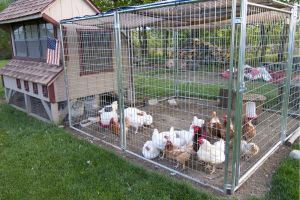
Ideally, you want the prevailing wind to not be carrying the odor of your livestock toward a main road or an area known for having a lot of predators. If your property has elevation changes you also need to account for them when placing something like a portable chicken coop.
Related: Chicken vs Duck
If you’ve ever been elk hunting in the mountains you might have noticed how the scent of elk will carry down-slope to you in the morning, and up-slope to you in the later afternoon. Then you’re likely to bump or spook them vice-versa.
This is due to the way scent is carried even in still conditions with thermal changes in the air. On a particularly cold morning the scent of your livestock can be carried downhill as much as 100 to 200 yards.
Block Sight Lines
You need to protect your livestock from being seen by would-be thieves. English and French farmers used thick hedges to do this in olden times, that were so robust they stopped tanks in World War Two.
You could replicate an easier version of this with a simple berm of soil three feet high. Then plant it with a mix of evergreen hedges or deciduous bushes like thuja, cherry laurel, and boxwood.
The other great thing about a hedge is that not only does it block sightlines, but it also gives you control over movement in and out of the property. Any would-be thieves that are bold enough to try to steal your animals will be forced to move where you want them to.
Deploy Double Fencing Around Livestock
 If you don’t want to take the time or invest in a big hedge system, fencing is your next best fallback option.
If you don’t want to take the time or invest in a big hedge system, fencing is your next best fallback option.
A single high fence can be expensive and takes time to maintain. However, before you start building, learn here why you should never build a tall fence around your property.
Two short fences around 4 feet high, spaced 4 feet apart with a ditch in the middle can be very effective at keeping predators and thieves out. A lot of wildlife won’t try to jump two short fences. This includes predators like coyotes and even garden-munching deer!
Planting thorny brambles in the ditch between the two low fences is also a nice deterrent, while keeping the cane corralled for easy picking. A 2 to 3-foot-deep ditch in the middle could be enough to stop a cattle-thief’s vehicle.
Protect Livestock with Guard Animals
If you have grazing animals, a proper guard dog or a donkey will help keep them safe. When you read the words “Guard Dog” your mind probably conjures up an image of a loyal German Shepherd.
I think the best option is a Great Pyrenees or an Anatolian Shepherd. Both breeds will live with the herd, and are more prone to protect animals, whereas a German Shepherd is wired more to be devoted to its master.
A good donkey will murder a coyote with the extreme prejudice of Jason Vorhees taking down recently deflowered camp counselors. They have long been common protectors of sheep herds.
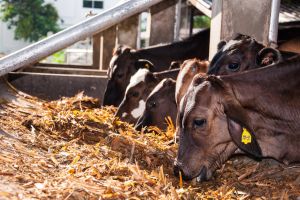
Be Smart About Livestock Muck Management
If you have cattle living in a barn, managing their muck is also a critical component of protecting them from would-be thieves.
Improperly managed manure can spread an odor that travels well over 200 yards up to a half mile from your barn!
A Manure Pile
This is the old-fashioned way to deal with manure and the most odoriferous of all the manure management options. If you have a small number of animals, such as a dozen or less dairy cows, you can cover a manure pile.
They make tarps specifically for covering manure piles. The wise move is to put some straw, dried grass or old leaves over the pile before covering it. Not only will this make it easier to remove the tarp, but it will provide a boost of carbon to help the manure compost quickly into less sticky soil.
A Manure Lagoon
A manure lagoon with a cover and applications of anaerobic digester is the better option for hiding the smell of a large number of dairy cows and pigs. This is arguably the best option if you need to manage the muck of more than a dozen animals.
Burying Manure
Another rudimentary way to reduce manure odor is to simply bury it. You’ll need equipment to dig a trench, with a loose pile of overburden soil at the lip of the trench. Then every few days the removed manure and straw is covered with soil.
Understand the Predator-Prey Population in Your Area
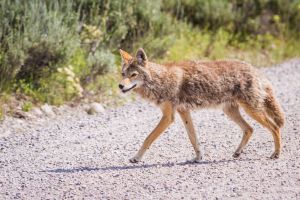 If the local predators don’t have enough wild prey, you’ll need to take extra measures to protect your livestock.
If the local predators don’t have enough wild prey, you’ll need to take extra measures to protect your livestock.
You have to take into account that the predator-prey population changes with the seasons. It will also change when SHTF and humans start to influence the surrounding habitat.
Related: The Best Way to Train Your Dog for Hunting and Security
Coyote and fox are more likely to go after your livestock in winter and early spring. This is when times are lean, and then they will be driven to look for more prey to support their young.
If the local population of rabbits and other small prey is high fox and coyote population are more likely to stick to them. If the prey population drops, your livestock will become increasingly attractive.
It’s also not enough to simply keep tabs on the predator-prey population in winter and spring. During a SHTF situation, other people will likely start hunting. Even if they aren’t in your proverbial backyard, their presence and pressure will push prey populations toward or away from your property.
Predators will follow in earnest both to keep up with their food source and to escape the human invasion into their habitat. Displaced foxes and coyote will be hungrier when on the move and more likely to see livestock as an opportunistic meal!
Mark Your Territory
Applying your scent in key wild areas can also help protect your property from predators during a SHTF situation. Many predators like fox and coyote are wary of man, but don’t have the same fear of man that say a bobcat, or a black bear does.
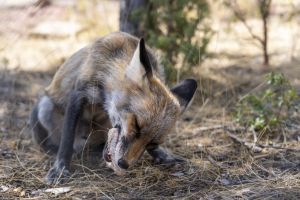
Still, when given a choice most animals will change their vector when traveling through the wilderness when they detect the scent of man.
If they pick up the scent of your urine or the urine of an unaltered male dog before they smell your chicken coop, a predator on the move is likely to steer clear.
Keep Quiet
When you bring animals to your property during normal times, keep quiet about it. Don’t go posting on social media about your cute new baby chicks, or those darling dairy goats you just brought home. Talk to your kids about not bragging to their friends about their cool new animals.
In a SHTF situation, all the people who know you have livestock will start heading your way when their own supplies start to dwindle. While it’s one thing to take in a family member or sell some eggs to your discrete neighbors, you don’t want to turn your property into the new community grocery store.
I recommend a zero-rooster policy or keep ducks instead of chickens. Not only will a rooster’s crowing advertise that you have chickens, it can also start to drive you crazy!
Hens will happily produce eggs in nearly total silence for up to three years, which is plenty of time for you to figure out how to “Borrow a Rooster” to propagate the next generation. If you want to double the egg production of you chickens, you should feed them this plant.
Protect Your Livestock from Diseases
During a SHTF situation, you also need to protect your animals from diseases. Especially since civil authorities and government agricultural offices will no longer be tracking things like wild avian influenza and salmonella outbreaks.
This starts with making sure all your poultry runs have a netting or fencing roof to keep wild birds from interacting with your chickens and ducks. You also need to double down on protecting your coops from racoons and other animals that might invade to take a bird, then leave behind other.
Foot and mouth disease will likely also become a problem for pigs, which can then quickly spread to any cattle or other susceptible animals on your property. Not to mention the constant concern about worms and other parasites.
Any incoming animals that you acquire need to be quarantined. It would also be wise to stock up on common livestock antibiotics and deworming agents to catch any sort of problem before it spreads through your animal population!
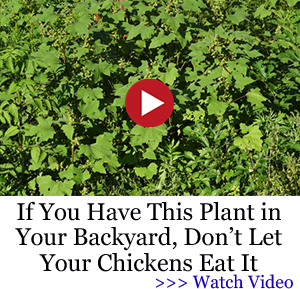 9 Scary FEMA Camp Facts You Must Know
9 Scary FEMA Camp Facts You Must Know
Learn How to Keep Eggs Fresh for at Least a Decade (Video)
The Best Places for Scavenging After SHTF

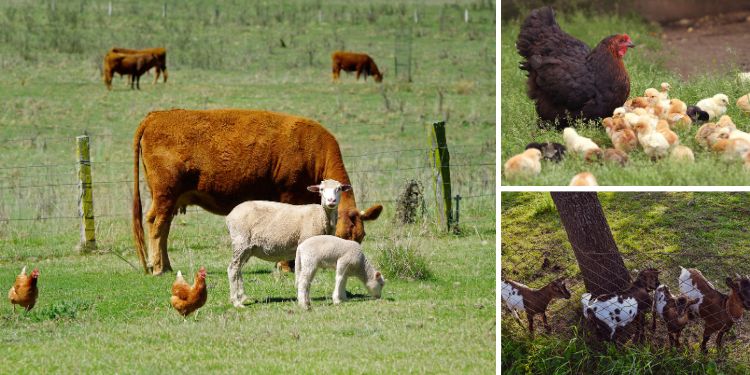













Besides predators there are fires we need to protect our livestock, pets and family.
Take a page out of the wildfires in mainly California, how preppers protect their livestock against man made wildfires. When investigations find most are not really nature made wildfires, incompetent state government lackadaisical dead brush removal programs nonexistent. California used to have brush removal program that helped reduce the fires.
Now California has illegals, homeless camps, Mexican, Chinese and middle east terror groups (Hamas, Hezbollah,Houthi) drug cartels, that are a cause for wildfires too.
I have a constant battle with rats and mice invading the chicken coup yard where we have hanging feeders and water feeders.
Have tried using peppermint and other mint oils but the rats get use to the smell. Sometimes the mint oil will attract them then repel them.
Have tried those rat traps but the rats get educated an eventually avoid them.
Tried semi success with a 50:50 mixture of jiffy muffin mix and baking soda in large plastic sandwich boxes with large hole cut in the side for rats to consume. Rats don’t burp so they end up dying of gas buildup.
Anyone else have successful tricks to rid rats and mice from the chicken coup and pen?
Cats